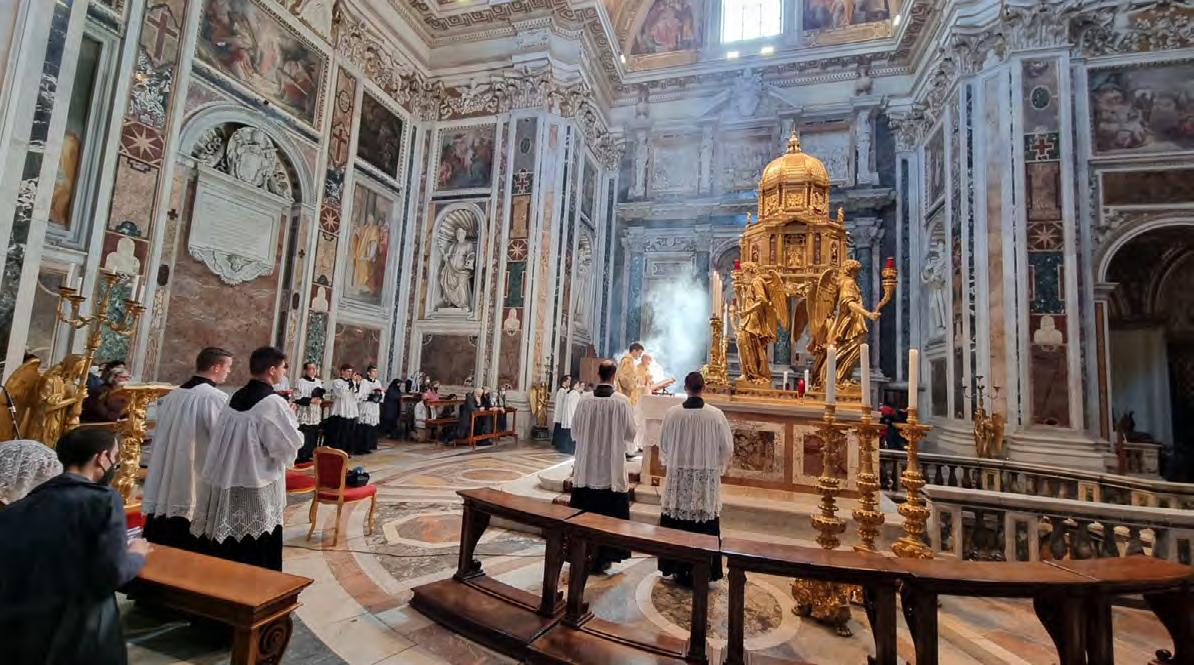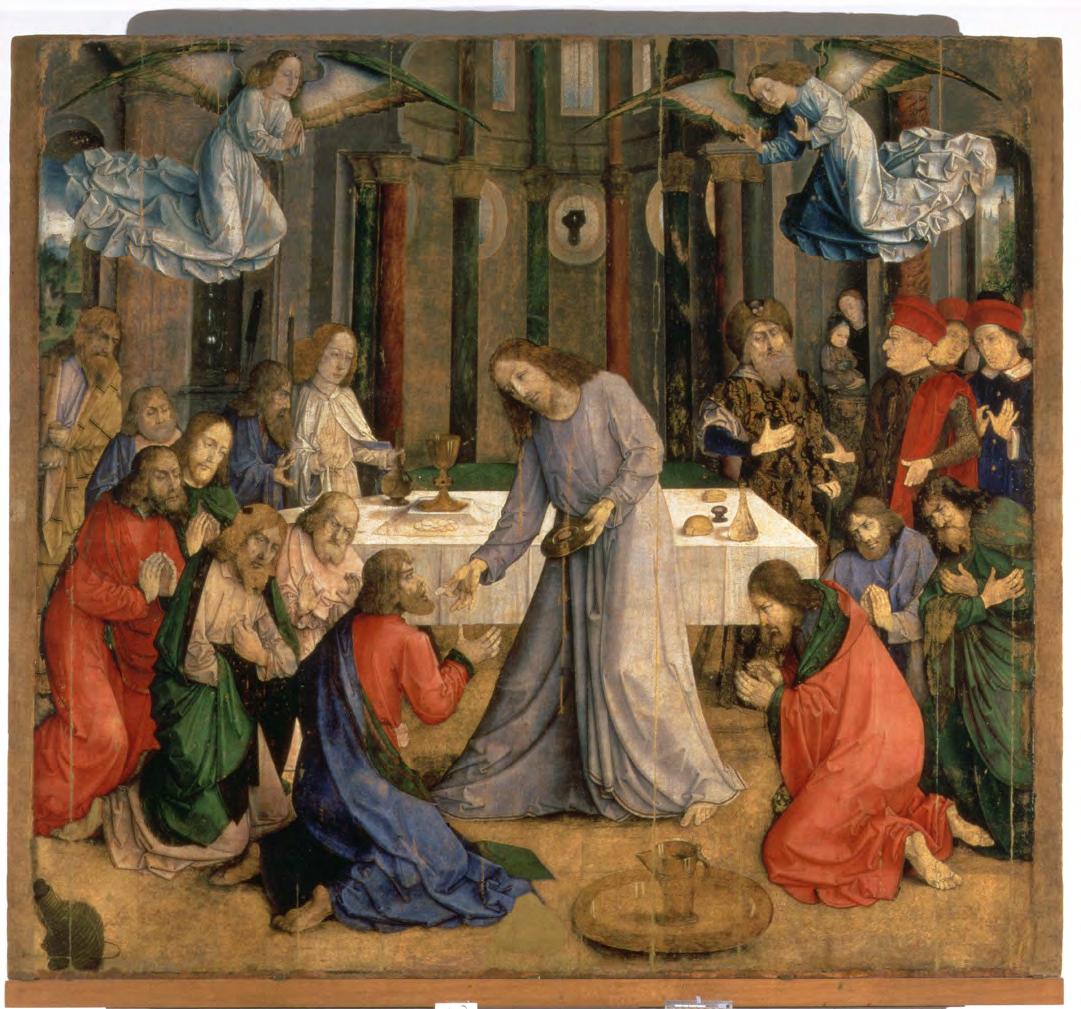
5 minute read
Books
Catholic Classic
Joseph Shaw reviews The King’s Achievement, by Mgr Robert Hugh Benson
(Cenacle Press; 442pp)
This classic of Catholic historical fiction was first published in 1904, but with several other works by Mgr Benson, it has just been reprinted by Cenacle Press, an enterprise of Silverstream Priory in Ireland. It is one of a series of historical novels Benson wrote about the Reformation period: it is followed by By What Authority?,The Queen’s Tragedyand Come Rack, Come Rope. However, The King’s Achievement stands alone as a novel.
It is a substantial work, and draws the reader deeply into the inner lives of two brothers: one of whom becomes a Benedictine monk, the other being a servant of Thomas Cromwell, the architect of the Dissolution of the Monasteries. The period covered is from the late 1520s to 1540. Although a great deal of historical scholarship has been done on this period since Benson’s day, his account of events sticks closely to the historical record, and his portrayal of the state of the religious houses, and popular feeling about the Dissolution, anticipates those of more recent historians such as Eamon Duffy.
Benson was himself a convert—the son of an Archbishop of Canterbury, no less—and his understanding of both sides of the argument is matched by the literary skill he shared with his brother, E.F. Benson, the creator of the perceptive and hilarious Mapp and Lucia novels. Mgr Benson adds to both these virtues, as a novelist, the insight of a profound spiritual writer. The result is a spiritual and psychological drama played out by the main characters, against the backdrop of the historical drama of the events of the Dissolution.
I found the novel extremely compelling—I could hardly put it down. I also found it quite emotionally demanding: the two brothers and their associates feel all the horror, defiance, triumph, and tragedy of their age, and through them the reader feels it too. It is Benson’s great achievement to help us understand the motivations even of those with whom we are least in sympathy.
One aspect of the drama is the cynicism and disdain of the anti-traditional party, who include the quietly tyrannical mother of the two brothers. She is confronted by a young woman from St Thomas More’s circle, who had absorbed the learning, piety, and high spirit of the great man. Benson explains: ‘…she had never been faced before; she had been accustomed to regard dovoutness as incompatible with strong character; she had never been resisted. Both her husband and children had thought to conquer by yielding - it was easier to do so, and appeared more Christian; and she herself, like Ralph, was only provoked further by passivity. And now she had met one of the old school, who was as ready in the use of worldly weapons as herself; she had been ignored and pricked alternately, and with astonishing grace too, by one who was certainly of that tone of mind that she had gradually learnt to despise and hate.’ (p347)
Benson is here addressing an accusation against Catholicism which established itself at the time of the Reformation, was still current in his own day, and a version of which is still encountered now. In slightly different terms, he describes it in his autobiographical Confessions of a Convert (also reprinted by Cenacle Press), referring to the claim that Catholicism leads to ‘the alienation of the men’. In short, the idea is that the Faith is effeminate.
The playing out of the issue between two strong women, in the novel, is a rather nice touch, and the historical background of the suffering of faithful Catholics, gives it a special edge. ‘Monkishness’, so much mocked by Protestant propagandists, is a way of life and set of characteristics which led the Carthusian martyrs to their deaths at Tyburn.
The Cenacle Press’ reprinting of this book, and the many others of their catalogue, is much to be applauded. It is newly typeset and nicely presented, with some newly commissioned illustrations. One missed opportunity, however, has been to fail to provide translations of the occasional Latin quotation. It is a sad statement on the level of education that could be taken for granted in Benson’s day, compared with that of today, including my own, that he and other authors of his day thought nothing of including quotations in Latin, and even in French, German, and Italian. Most of Benson’s Latin, it must be said, is not too difficult, and none I think is essential to understanding the storyline, but the convoluted motto on the seal of the Abbey of Lewis (whose patron was St Pancras) was a challenge. Perhaps a Mass of Ages reader can come up with a snappy translation?
Dulcis agonista tibi convertit domus ista Pancrati memorum precibus memor esto tuorum.

The King’s Achievement, and other books by Benson, is available from the LMS online shop, £19.75 + £3.71 p&p.










